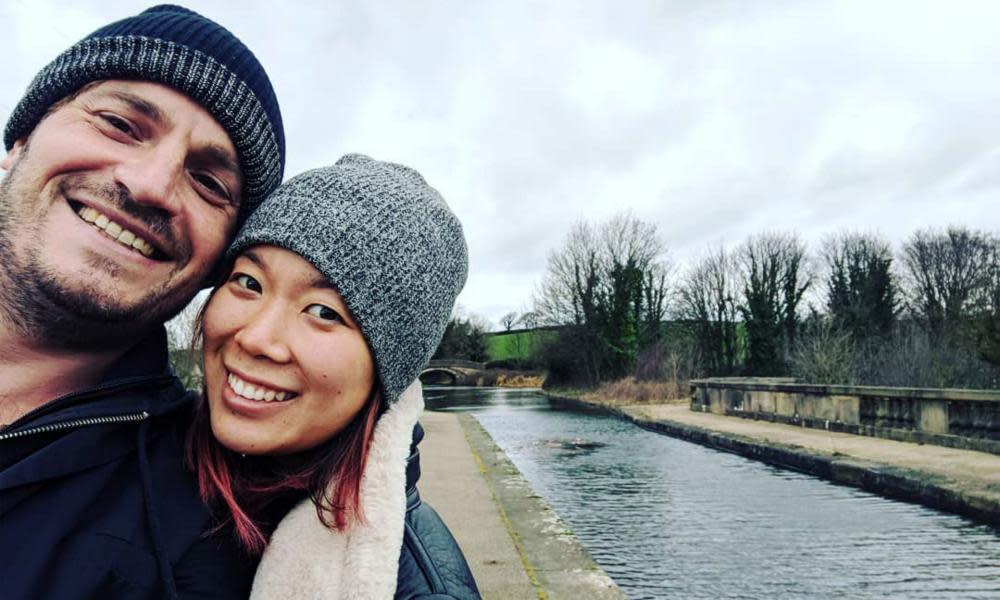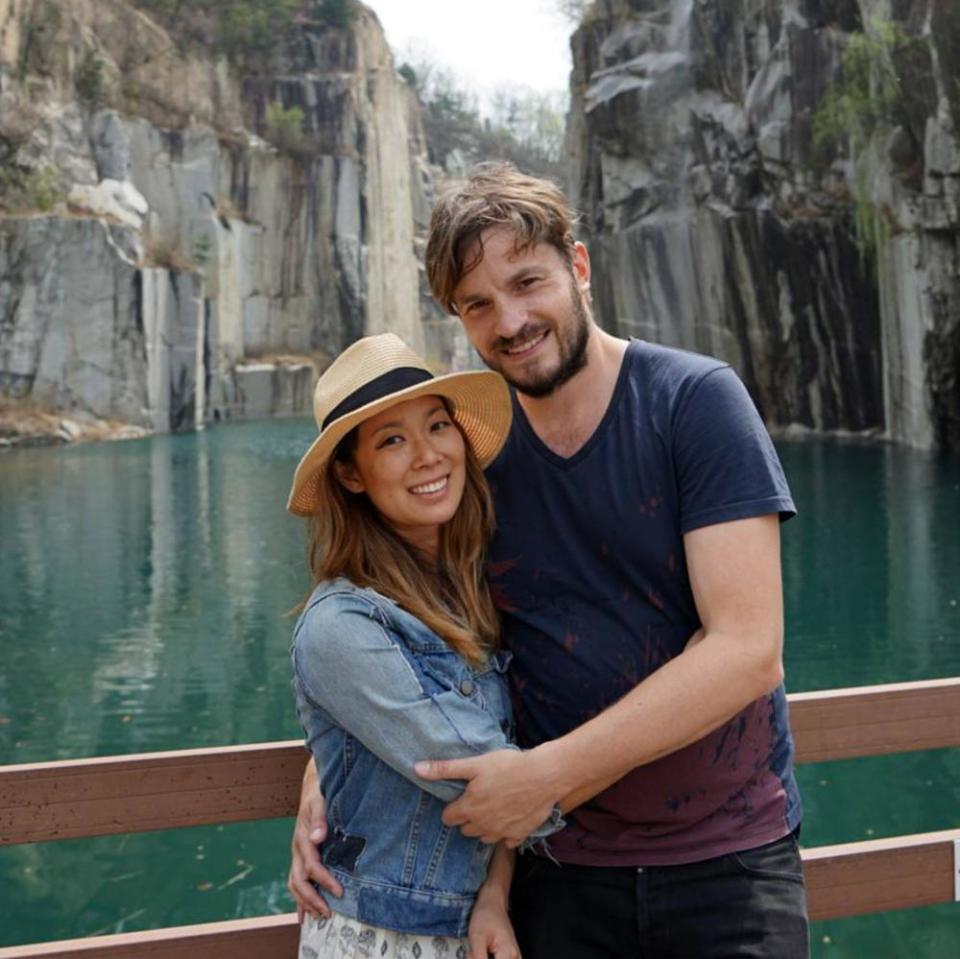The tragic missteps that killed a young California family on a hike

When a young family died mysteriously on a trail in California’s Sierra Nevada mountains in August, authorities scoured the area for clues. Maybe there was a gas leak from a nearby mine. Maybe the family drank water that contained toxic algae. In the end, as a new report showed, the answers were more prosaic, if just as tragic: the triple-digit temperatures and tough terrain created a fatal situation.
Related: California family found dead on hike killed by extreme heat, sheriff says
Nearly 80 pages of investigative reports obtained by the San Francisco Chronicle lay out the tragic missteps that led to the death of the young family and hold important lessons about the dangers of hiking in a grueling climate.
The family, Ellen Chung, 31, Jonathan Gerrish, 45, along with their one-year-old daughter, Miju, and dog, Oski, set out to hike at the Hites Cove Loop trailhead in a remote area of the Sierra Nevada national forest on 15 August. Their truck was found near the trailhead two days later and crews soon found the bodies of Gerrish and Miju – with Chung’s body a little higher on a hillside.
The local sheriff’s office announced in October that the family died of overheating and probably dehydration. “This is an unfortunate and tragic event due to the weather,” Mariposa county sheriff, Jeremy Briese, said at the time.
The records show that Gerrish had used the AllTrails app to map out the hike and that he had hiked a portion of the same loop in May 2017. But the temperatures at the time had been much lower and the 2018 Ferguson fire hadn’t yet burned out tree canopy in the area.
Grueling mid-day temperatures and a lack of shade had moved locals in recent years to avoid the hike during the summer. But the family was new to the area: they had moved to Mariposa, in the Sierra foothills, during the pandemic and bought numerous properties. Chung was a yoga instructor and graduate student and Gerrish was a Snapchat engineer.
According to the report, a US Forest Service volunteer who had hiked the nearly eight-mile loop more than a dozen times told a deputy the family appeared “completely unaware of the dangers”. They carried only a sippy cup and a backpack with a 2.5-liter reservoir for water, the records show.
For Wesley Trimble, a communications and creative director with the American Hiking Society, the tragic incident serves as a reminder to be prepared when going hiking, by planning before leaving the house.

He advises telling people where you are going and when to expect you back. “People often don’t think about it, but it’s a critical step: telling a neighbor or a family member that you are going to a specific location and that you’ll be in touch when you are back in an area with a cell signal,” Trimble says. And if you don’t return when you expect, give someone specific instructions, like the sheriff’s office for the county where you are hiking, if they don’t hear from you at a specified time.
Another way to plan before hitting the trail is to really look at maps and come up with a game plan, including when to turn around based on timing, even if it means not reaching a desired destination. “In the winter time frame, that might mean getting back before it’s dark, and in warm weather it might be looking at the forecast,” says Trimble.
The day of the Mariposa family’s hike, the temperatures were in the upper 70s in the morning, but rose to 109 in the afternoon when they were on the trail. That shows it’s important to consult detailed weather predictions, Trimble says – and to check the weather not just with the widget on a smartphone, but with better technology. Noaa has a website that can do pinpoint forecasting on a map, which will give a much better idea of what the forecast is, he says, because geography plays a critical role in weather.
Trimble also suggests checking in with locals about a trail – a gear shop or even a tourist office will have insight into local conditions that may not be listed on a trail-mapping app.
The American Hiking Society has a list of the ten essential items that everyone should have when heading out for a trek. For hikes during hot weather, it’s essential to haul enough water. “It’s hard to give people a very specific number with water,” says Trimble, though most hiking experts say about 16 ounces or a half liter per hour per person, for moderate temperatures and terrain. “If you are hiking in triple degree temperatures you will need at least a liter of water for every hour you plan to be out,” he says.
In addition, for warmer-weather hiking, it’s important to be familiar with the symptoms of heat exhaustion and heat stroke. “You want to be able to pick up on if you or someone is experiencing nausea and headaches and other symptoms, because if you are hiking in hot temperatures it’s a good sign that you are probably starting to get dehydrated,” says Trimble. “Make sure everyone is drinking water consistently – by the time you are thirsty, you are already starting to become dehydrated.”

